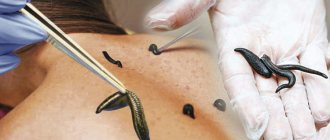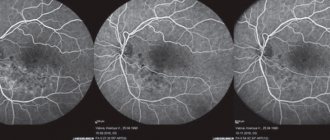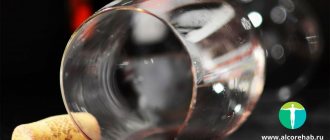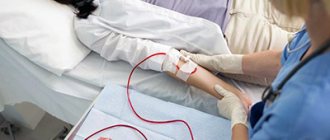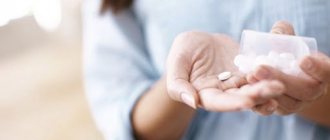When are codeine syrups prescribed?
Medicines of the codeine group are used for the following pathologies:
- Throat diseases that cause debilitating coughing attacks: laryngitis, pharyngitis, tonsillitis;
- Pneumonia;
- Bronchitis;
- Whooping cough.
Syrups affect the centers of the brain responsible for cough impulses. At night, the cough becomes especially intense and causes insomnia. Codeine helps control severe cough impulses.
Despite this, syrups of these groups are prescribed in extreme cases, since the content of the narcotic drug requires strict adherence to the dosage.
Literature:
- Mashkovsky M.D. Medicines: In 2 volumes. T.1. — 14th ed., revised, corrected. and additional - M.: "New Wave Publishing House", 2000. - 540 p.
- Kharkevich D.A. Pharmacology: Textbook. — 6th ed., revised. and additional - M.: GEOTAR MEDICINE, 1999. - 664 p.
- Ponomareva I.P. Pain management (selected questions in tables and algorithms): textbook. Ministry of Education and Science of the Russian Federation, Federal State Autonomous Educational Institution of Higher Education "Belgorod State National Research University". - Belgorod: Belgorod National Research University "BelSU", 2021. - 50 p.: table.
- Workbook on pharmacology: workshop. Part 4. Pokrovsky M.V., Danilenko L.M. Ministry of Education and Science of the Russian Federation, Federal State Autonomous Educational Institution of Higher Education "Belgorod State National Research University". - Belgorod: National Research University "BelSU", 2021. - 70 p.
Contraindications
The cough medicine has an extensive list of contraindications. It is necessary to refrain from consuming codeine-containing syrups without a doctor’s prescription: otherwise, the risk of severe adverse reactions increases. Syrups are contraindicated in the following conditions:
- Pregnancy and lactation;
- Bronchial asthma;
- Individual intolerance to components;
- Respiratory failure;
- State of alcoholic intoxication;
- Epilepsy;
- Heart rhythm disturbances;
- Hypocoagulable state;
- Acute kidney and liver diseases.
Before prescribing the syrup, the attending physician carefully examines the patient’s medical history and life history. If a person has no contraindications for use, the doctor writes a prescription to purchase syrup at the pharmacy.
Treatment methods
The prognosis of therapy directly depends on how quickly after the first symptoms of codeine addiction appear the patient sees a narcologist. By and large, no matter how much the patient hides, it is not difficult to recognize the signs of drug addiction, especially for family members living with him.
First of all, behavior changes. Sudden changes in mood (from depression to euphoria) and physical activity (from complete passivity and impotence to frantic energy) should alert you. A person can often be caught in a lie, he becomes selfish, and quickly gets irritated when trying to figure out what’s going on.
But external signs and even pronounced withdrawal symptoms are not enough to confirm an addiction to codeine. To begin treatment, the doctor must know exactly what the patient is taking. The drug can be detected through clinical test results.
The treatment process for codeine addiction includes several stages:
- Detoxification.
Either “standard” medicinal methods are used (administration of infusion solutions, vitamins, means for maintenance therapy), or the UBOD (ultra-rapid detoxification) method. The advantages of the latter are the possibility of carrying out the procedure under general anesthesia (the patient does not feel severe and rapid withdrawal) and the use of a specific codeine antidote - naltrexone. - Rehabilitation treatment
disorders caused by long-term codeine abuse. - Psychotherapy
. The doctor works with the patient individually, sometimes family consultations are also necessary. - Coding.
For encoding, they usually offer a combination of hypnotic (including Dovzhenko’s own method) and medicinal effects. Naltrexone-containing drugs are also used for drug coding. They are either injected or implanted under the skin. In recent years, hardware treatment methods have become widespread. - Rehabilitation
according to individually selected therapeutic programs.
With timely consultation with a doctor, in the vast majority of cases, codeine addiction can be completely eliminated and severe irreversible consequences can be avoided. The main thing is to be able to recognize the signs of drug use in time and strictly follow all the recommendations of the attending physician.
What is the effect of codeine syrup?
The use of drugs containing codeine leads to a side effect - euphoria. Drug addicts use drugs of this group as a substitute for opioid drugs.
As a result of long-term use of narcotic syrups, severe drug addiction develops, and internal organs are rapidly destroyed.
General information
Codeine is the second most important alkaloid of opium, the milky juice of the poppy. The chemical structure of codeine is very close to morphine, differing only in the presence of a methyl group at the hydroxyl ion in the 3rd position of the benzene ring. Therefore, codeine is always compared with morphine: in terms of therapeutic and narcotic activity, degree of danger, likelihood of addiction - in all these parameters codeine is inferior. However, this does not indicate the absolute safety of the drug, as was commonly believed in the middle of the last century.
Types of codeine-containing cough medications
There are several analogues of codeine-containing medications, differing from each other in the form of application. There are syrups, drops and tablets containing codeine.
Cough syrup with codeine
In addition to the active substance, syrups contain additional components to enhance the effect of codeine, as well as flavoring additives that facilitate application. This form of the drug is often used for pediatric patients because they are easy to use and do not have a tart aftertaste.
Codeine cough tablets
Soviet drugs containing codeine are often produced in tablet form. These medications include Tedein, Codelac and Terpinkod. The use of tablets in a dose exceeding the therapeutic one causes short-term euphoria, and then severe opioid dependence.
Cough drops with codeine
Codeline-containing drops include Codelac Neo. The drops often contain ethyl alcohol, and therefore their use is strictly contraindicated for people with alcohol addiction tendencies.
Content:
- What is codeine:
- Consequences of using codeine:
- Treatment methods.
1.1. Mechanism of action of codeine.
2.1. First stage. 2.2. Second phase. 2.3. Third stage. 2.4. Symptoms of drug intoxication. 2.5. Picture of withdrawal syndrome. 2.6. Overdose.
Codeine is an officially registered drug. The product has an analgesic and antitussive effect, thanks to which it is still used for medicinal purposes. But, like other opium poppy alkaloids, codeine has a psychostimulant effect. Although it is less pronounced than with morphine and synthetic opiates (heroin, methadone, fentanyl), uncontrolled use of the drug can cause physical and psychological addiction - codeine addiction.
What syrups contain codeine?
The following medications are used to treat coughs, but drug addicts often obtain them through illegal means for recreational use. This means that if packages of codeine-containing drugs are found on a person without special indications, drug addiction can be suspected.
Promethazine
Promethazine is an antitussive, analgesic and antihistamine. The substance is produced in the form of syrup, has a depressant effect, and in combination with third-party ingredients has an antitussive effect.
Codelac
Codelac includes several main components that determine the therapeutic effect:
- Thermopsis - increased bronchial secretion;
- Licorice – anti-inflammatory effect;
- Thyme – relief of spasms;
- Sodium bicarbonate – decreases mucus viscosity.
Codelac phyto
The drug has a mucolytic, analgesic, expectorant and anti-inflammatory effect. The syrup contains herbal components that have a powerful therapeutic effect in combination with codeine.
Kofex
In addition to codeine, the syrup contains chlorpheniramine, which has an antihistamine effect. This reduces the likelihood of allergic reactions as a result of other syrup components entering the body.
Tussamag
The substance helps relieve cough impulses during pneumonia and bronchitis, and eliminate pain. Tussamag is involved in suppressing the growth and development of pathogenic fungi and bacteria.
Neo-codion
In addition to anti-inflammatory, antitussive and analgesic properties, Neo-codion contains a complex of vitamin substances involved in strengthening the immune system.
Glycodin
Glycodin
- syrup with antitussive effect. The use of Glycodin, like other codeine-containing drugs, is strictly under the supervision of a doctor. Otherwise, there is a risk of developing severe dependence, uncontrolled increase in dosage and a state of drug intoxication.
Leave a request for a free consultation with a specialist
we will contact you as soon as possible
- Anonymously
- For free
- Around the clock
Submit your application
Or call: +7 (495) 127-02-03
Chemical and toxicological study of biological samples
Codeine is metabolized in the body in three ways:
- Binding to glucuronic acid - excreted in urine as a glucuronide;
- O-demethylation – morphine is formed;
- N-demethylation – narcodeine is formed.
There are no rapid tests for determining codeine. Therefore, tests are used to determine specific antibodies to morphine. Immunochemical analysis is considered a preliminary study. Therefore, biological samples are sent for laboratory diagnostics.
Brands and manufacturers of express tests:
- ImmunoChrome – Morphine – Express – strips for one-step determination of metabolites in urine. MED-EXPRESS-DIAGNOSTICS company (Russia);
- Narcochek - tablet test - system for determining metabolites in urine. I&D Diagnostics Company (Canada);
- Vivacek is a rapid test for determining morphine and its metabolites in the blood. Manufacturer USA.
Express tests do not determine the concentration of a substance, so it is only possible to establish the fact of drug addiction.
Chemical and toxicological analysis in the laboratory is carried out in two stages. The first is preliminary testing of the sample. More often, a urine sample is used for testing, since traces of the drug are present for a longer time. The second stage is confirmatory. The gas chromatography method is considered the most reliable and accurate.
Various laboratory identification methods can distinguish codeine from morphine. Morphine and codeine are similar structural alkaloids, therefore they give a number of positive reactions to the same reagents. But at the same time, codeine does not give a positive reaction with ferric chloride and potassium hexacyanoferrate. Codeine can also be distinguished from morphine by light absorption in the infrared region of the spectrum.
Kramarenko V. F. Toxicological chemistry / Kramarenko V. F.
Gas chromatography allows you to study any biological samples. It is impossible to deceive a chemical-toxicological study.
Enhanced poisoning therapy
7,500 pcs.
- Dropper volume 1500 ml
- Visit of a narcologist
- Patient examination
- Consultation with a narcologist
- Detoxification
- Doctor's orders
- Medicines for 3 days
- Monitoring the patient's condition
Order service
During therapy with codeine-containing drugs, the doctor constantly monitors the patient. If adverse reactions or signs of addiction develop, the specialist reduces the dosage or discontinues the drug. Self-administration of syrups, even in small doses, can lead to the development of severe pathologies, as well as drug addiction.
Rehabilitation
Rehabilitation is an important part of treatment, without which it will not be effective. This process consists of resocialization and psychotherapy of codependent relatives.
Resocialization
Restoring the individual mentally, physically, and socially is resocialization. Without returning the person to normal life, where nothing will remind him of addiction, treatment will not be effective. We must not forget about this and neglect this component of the rehabilitation process.
A continuation of resocialization is working with relatives and close people who surrounded the patient during his illness, who are commonly called codependents.
Working with codependents
Codependency is a feature of relationships between drug addicts and loved ones who do not use drugs themselves, but are constantly in close proximity. Sometimes codependents need psychotherapy no less than the patients themselves. Untreated relatives can greatly harm the treatment and rehabilitation process. All methods of psychotherapy used to treat drug addicts are used to work with codependents.
Harm of syrups containing codeine
Self-administration of syrups with codeine leads to the following consequences:
- Development of acute cardiovascular pathologies
: hypertensive crisis, heart attack, stroke, ischemia. Often, these conditions occur during use with a latent form of cardiovascular disease, or as a result of ignoring individual contraindications; - Severe drug addiction
. Codeine is a derivative of morphine from the group of opioid drugs. This means that long-term use without a prescription leads to the development of drug addiction. Often, after recreational drug use, a strong craving for psychoactive substances develops. After consuming syrup, a person becomes interested in drugs of other groups;
- Liver dysfunction
. Due to hepatotoxicity, the drug promotes the destruction of liver cells. Delay in seeking medical help can lead to diseases such as liver failure, cirrhosis, hepatitis and even death.
The use of codeine syrups can be the beginning of severe drug addiction. A person is looking for ways to acquire the drug through illegal means. Over time, resistance develops: to achieve the desired effect, the dosage of the drug is increased. Complete degradation of personality occurs, loss of previous social connections, overdose and death.
Withdrawal
Withdrawal syndrome from codeineism occurs approximately 4-5 months after the start of regular drug abuse.
Its main symptoms are similar to withdrawal symptoms due to morphinism:
- runny nose, frequent sneezing and watery eyes;
- increased salivation;
- dilated pupils;
- sleep and appetite disturbances;
- an irresistible desire to use codeine;
- changes in body temperature - chills and fever, goosebumps;
- discomfort caused by muscle tension throughout the body;
- joint and muscle pain;
- dyspeptic disorders in the form of severe pain in the intestines, diarrhea, vomiting.
With codeineism, the symptoms are less pronounced, intestinal disorders predominate. Withdrawal syndrome lasts longer - up to three to four weeks. As codeine addiction progresses, the withdrawal syndrome changes – striking symptoms such as runny nose, watery eyes, and muscle pain disappear. Instead, hypotension, depression, and severe weakness appear. The patient is characterized by hostility towards others and anger towards the whole world. Mood improves only with the use of new doses of codeine, which over time greatly increase and reach lethal levels.
How to speed up elimination at home
Self-medicating and accelerating drug elimination at home is dangerous for the patient’s life. This is due to the exaggeration of drugs that people take to improve metabolism and elimination of the drug.
You can remove the drug at home only using standard methods. Such techniques do not harm the patient and activate his internal reserves.
What to do at home:
- Take sorbents. The route of administration of codeine is mainly oral, so sorbents in the first hours help reduce the absorption of the drug into the blood.
- Drink plenty of fluids. When drinking alkaline water (Borjomi, Essentuki) or even ordinary water, filtration in the kidneys accelerates. Accordingly, drug metabolites are eliminated from the body faster.
- Perform minimal physical activity or exercise. The more activity, the higher the body temperature. The higher the body temperature, the faster the metabolism and elimination of the drug.
If you took the drug no later than 2-3 hours ago, you can try gastric lavage. Drink 1-1.5 liters of water and artificially induce vomiting by pressing your fingers on the root of the tongue.
You can drink tea with a choleretic effect or perform liver tubage. The action of opiate receptor agonists leads to stagnation of bile and a decrease in the rate of drug elimination from the body. If you “start” the liver, the elimination of drugs will accelerate.
Working with codependents
Codependent people are relatives, parents, husband or wife. Such people suffer first of all together with the dependent person. Therefore, they can be both the cause of a new breakdown and a reason to stop using.
Codependents must be able to recognize attempts at new use and know how to prevent them. It is believed that close people do not believe or do not see the problem until the last moment. The task is to teach them not only to see the problem of drug addiction in their loved ones, but to tell them how to overcome it.
Coding
Coding involves getting rid of addiction in 1 appointment with a doctor or person who conducts the session. In practice, efficient coding does not exist. Evidence-based medicine does not provide examples of successful coding that would help the patient.
All coding features involve intimidation of patients or psychological pressure. Such methods may not be effective for everyone, mainly, in rare cases, for alcoholics and smokers. This doesn't help with drugs.
Resocialization
Resocialization is the last stage in rehabilitation. As soon as a person recovers from addiction, he needs to return to society. To do this, you need to help him recover, give a new assessment to his new self. It is important to restore faith in your capabilities and get rid of the mental cliché of an addict.
It is very difficult to do this on your own. You need to constantly communicate with other people or a psychologist. An excellent way to resocialize is to learn a new profession or master a new field of activity.
As soon as a person returns to society, the risk of relapse is reduced to a minimum. If this does not happen, it is necessary to undergo further rehabilitation, otherwise there will be no point in it.
How to quit on your own
Out of 10 people, only 1 can quit drugs on their own. To do this, it is necessary to eliminate all contacts with those who use or distribute any drugs. This way there will be less temptation to use again.
You can’t put off the “tie” for other days. If you start, then from the day you decided. Putting it off until later will result in no results.
It is necessary to prepare for withdrawal and withdrawal symptoms. Eliminate all social contacts that could trigger a breakdown. The causes of disruption are often conflicts at the everyday level with family members. Therefore, you need to be mentally prepared for this or wait out the critical moment in another place.
You definitely need to find something to do that will distract you from the thought of using drugs. For example, work that brings pleasure, playing sports, walking, reading books, etc.
